CO (carbon monoxide) detector. What is it and why?
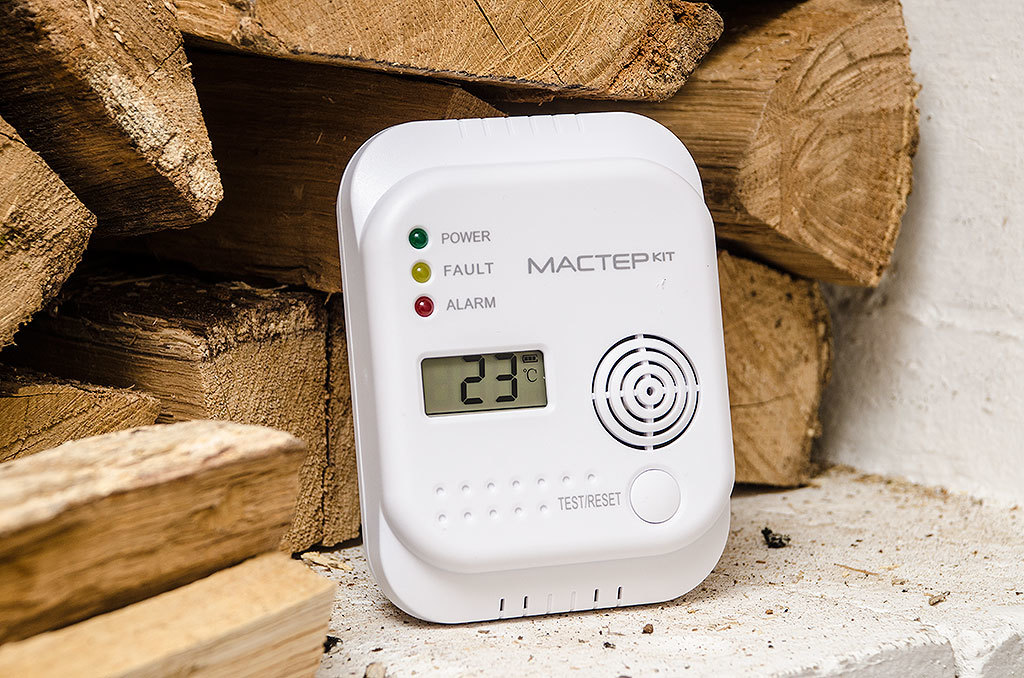
In the days before historical materialism and global warming, when Gazprom had not yet spread its iron tentacles around the planet and stove heating was the main way not to give oak in our harsh climate, one of the most dangerous domestic phenomena was "waste." From it, happened, were lost by the whole families. Why all? And because they didn’t have such a useful device:
The Dadzhet company’s carbon monoxide detector is designed to signal the presence of dangerous concentrations of carbon monoxide and CO in the air. This is the "carbon monoxide", which is formed during the combustion of carbon or compounds based on it (for example, gasoline) under conditions of lack of oxygen. How is it formed in living conditions?
There are two main ways to get angry (do not try to repeat this at home):
1. If there are unburned coals in the heated stoves or a fireplace, and the pipe of the pipe is closed. The most common cause of the stupor in earlier times was that the thrifty peasants would necessarily close the pipe after the furnace was fired, since part of the heat went through the stove cramping, hitting the hut. If this is done a little earlier than necessary, then the embers in the preheated furnace insert CO.
2. Nowadays, when furnace heating is more likely a rarity, and fireplaces, due to a more open construction, are still less prone to the formation of CO, the most frequent cause of the burn is a car that has a running engine in the garage. Especially during the morning warm-up - a cold engine, working on a re-enriched mixture, emits just a huge amount of CO. And, if you think that the open gate will save you - then no, nothing like that. Concentration is growing VERY quickly, it does not manage to be ventilated through the gate. To death, of course, hardly ache, but then the head will hurt so that the living envy the dead.
In general, the detector of this CO itself is more than necessary, especially to me - a person living in a private house with a stove and fireplace, and also having a hobby as a hobby about cars in the garage.
So, the detector from the company "Dadzhet":

Plastic white body, digital LCD indicator, one button, three LEDs, grill siren-chants.
The indicator shows two types of data - the air temperature in the room:
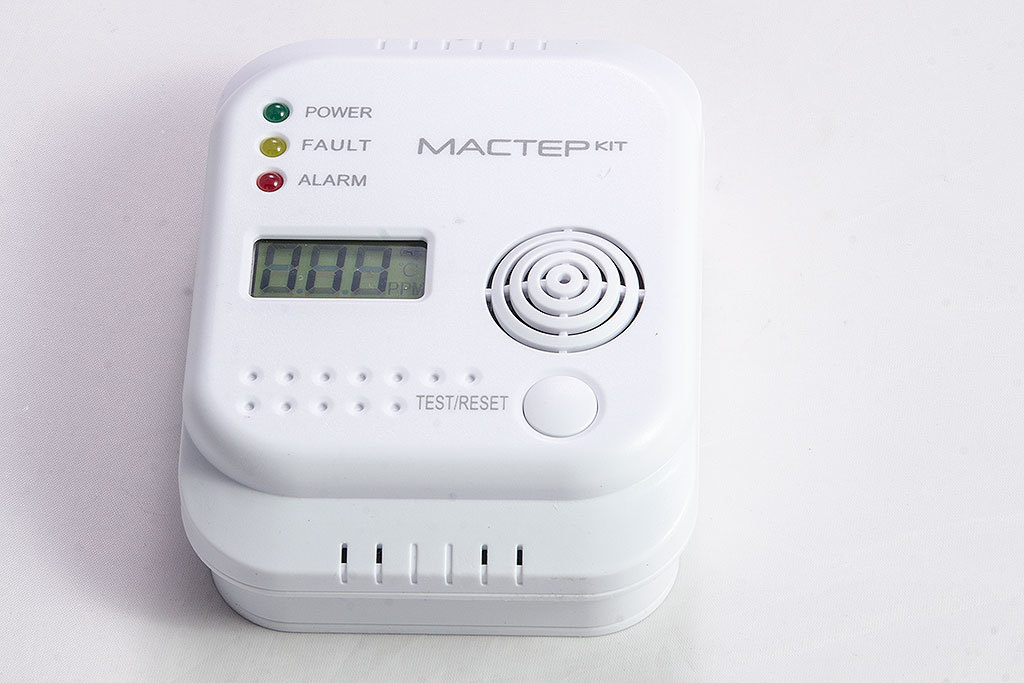

... and the content of CO in this air - in PPM, that is, parts per million - parts per million. The tolerance table (at what concentration you will need glue for flippers) is in the manual, but from a practical point of view - any concentration that such a detector will detect (from 25 PPM) requires an immediate response from the user - in order to understand where the waste is.
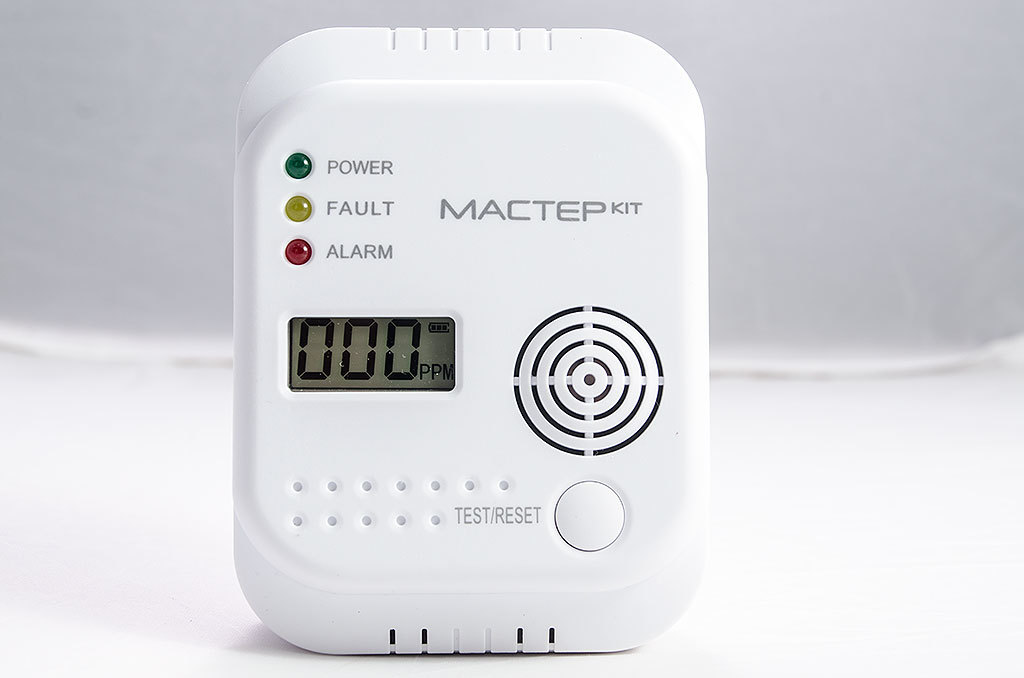
There is also a battery charge indicator. The batteries themselves are hidden behind the compartment lid, which at the same time is a fastening element (on the wall):
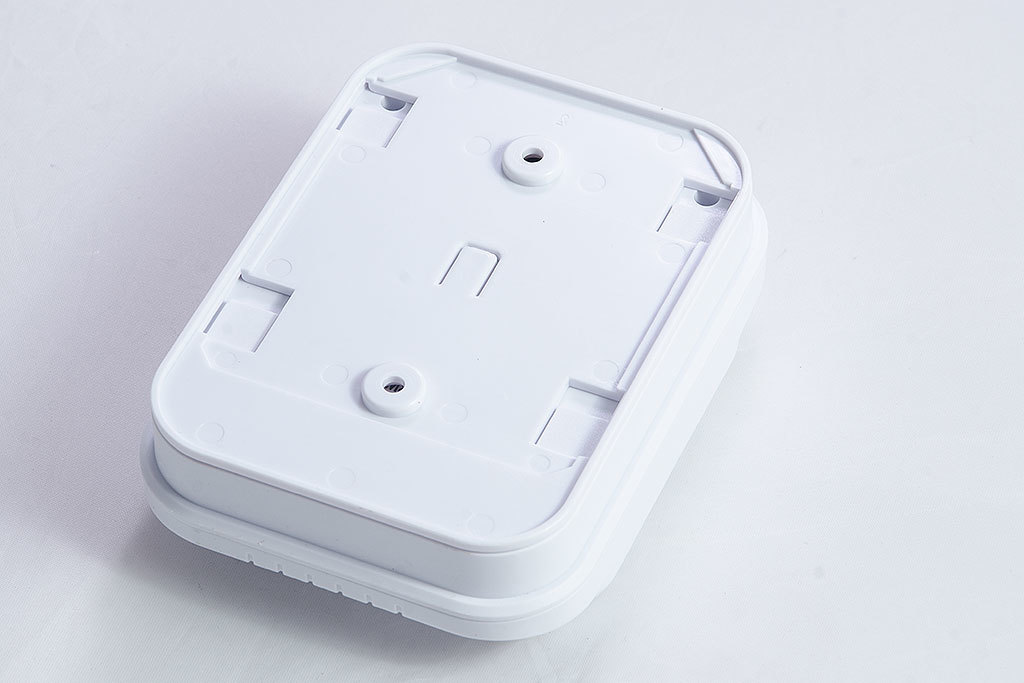
The plastic socket is screwed to the wall with two screws, and the device itself clips onto it.
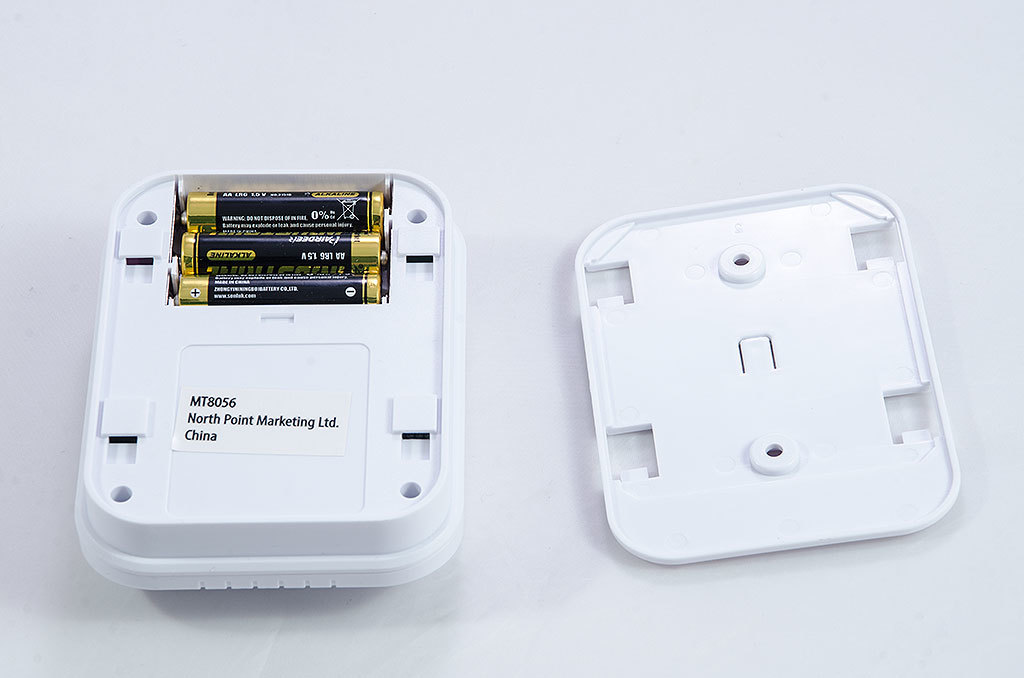
The batteries in the compartment are spring-loaded with special plastic stops, so when removing the device from the base, they strive to jump out and roll out at the corners.
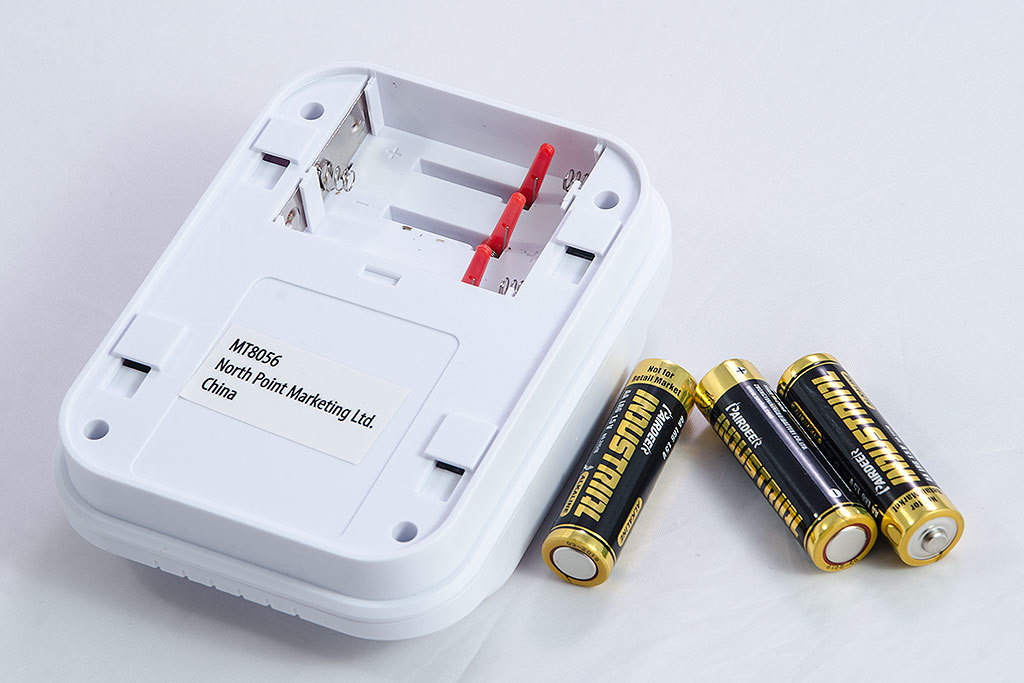
If the device is disassembled, an electrochemical sensor is visible:
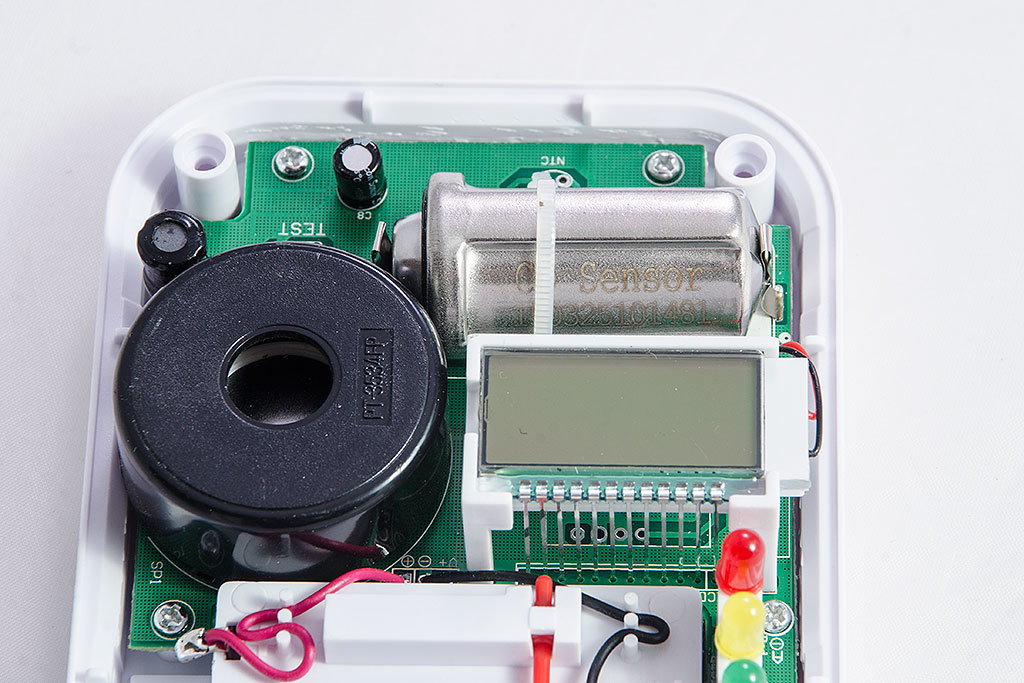
This is an element that reacts to the chemical composition of air by changing the conductivity. CO molecules enter into an electrochemical reaction at the electrode and allow the direct linear dependence of the current on the concentration of the measured component to be used.
Black round hole with a hole - piezoelectric detector PT-3534FP, 105dBA, from 2900Hz to 3900Hz. Damn loud thing with a rarely nasty sound - wake up with a guarantee.
On the reverse side of the board are two chips:

One of them is HT16218, the controller of the LCD indicator, and the second one is so worn out that I didn’t disassemble.
To check the operation of the device there is a button "Test" - you can click on it and listen to how loud it shouts. But, you see, this is not the most reliable method of verification. I want, so to speak, a more realistic experience.
Of course, you can heat the stove, close the flap and see what happens earlier - I will die or the indicator will work, but my confidence in the technology is not so great, and then I have to torment the air, especially since it's cold outside.
So I decided to increase the CO content in the test volume in a simpler way - by substituting the detector under the vehicle exhaust.
He inserted the oil bottle neck into the exhaust pipe, put the device in it and started the engine. The cold engine spat out at the start so much CO that the detector screamed instantly, showing MACs. As the temperature warmed up, the readings decreased, but it’s definitely not worth breathing from this ...
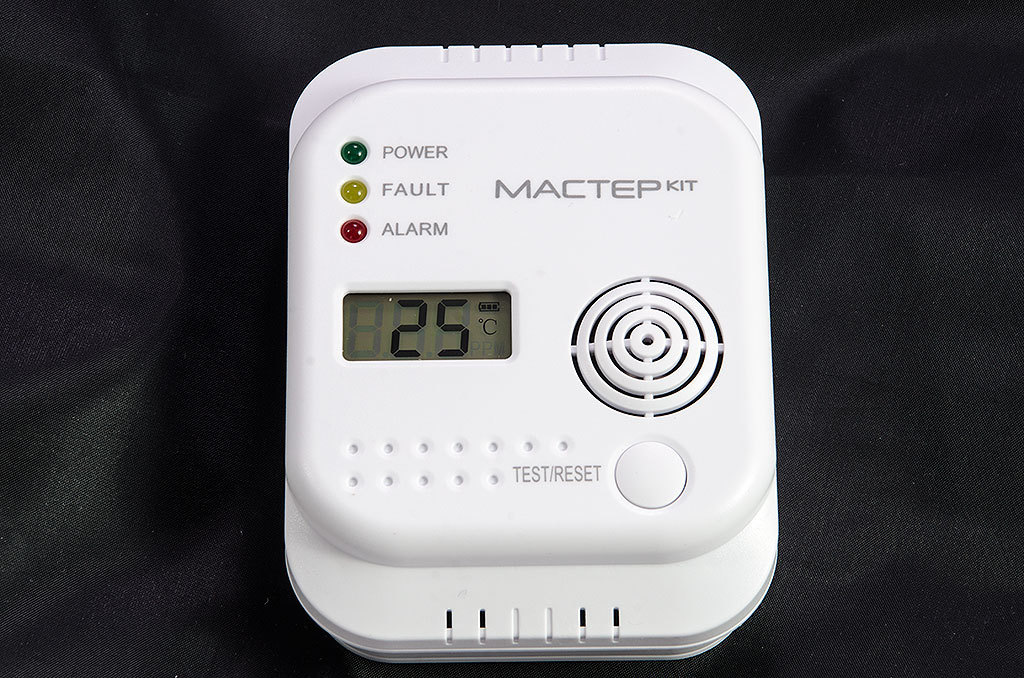
In general, the test showed that the device was operational, and it solemnly took its place in the house:

(The round thing is a smoke detector, which is also not superfluous when stove availability). Since CO is lighter than air, it is better to place the detector higher, but not near the ceiling:

Conclusions:
For those who have a house like mine, it is heated by a stove - a real masthead. Perhaps this thing will never work in life, but its only triggering will save the lives of everyone in the house. The same thing - closed fireplaces with doors. For this you should definitely pay 2,950 rubles - and let them hang. With a quiescent current of 80µA, the batteries last for a long time.
I also highly recommend to all lovers to tinker in the garage - there is more chance of breathing CO. However, unfortunately, the characteristics do not specify the temperature range of the detector. I assume that at sub-zero temperatures the electrochemical sensor may not work correctly, and the batteries do not like frost. So, in the unheated garage in the winter there will be little sense from him ... However, those who want to rattle the keys in the cold are not legion either. You can buy here .
Pavel Ievlev, Voronezh
